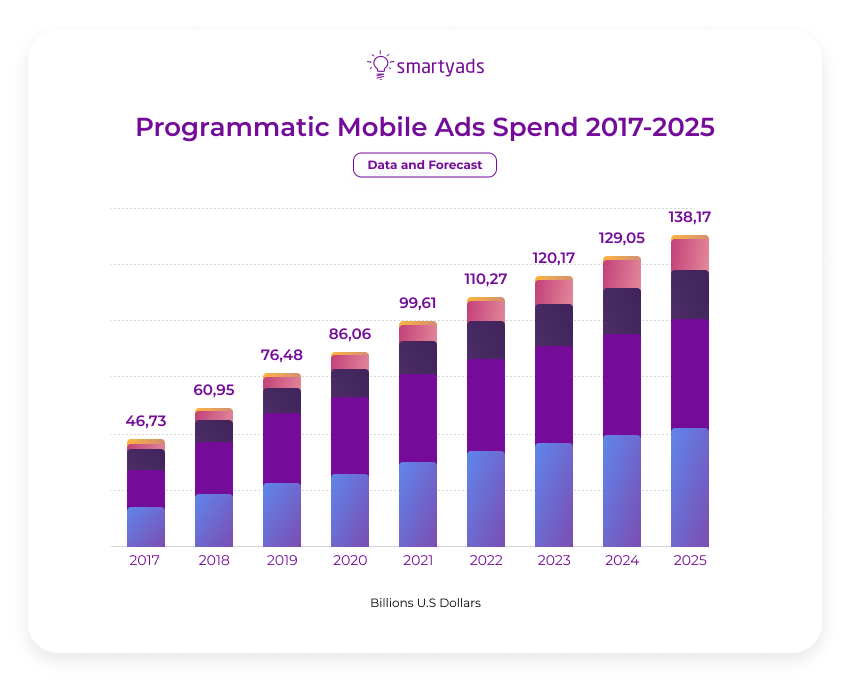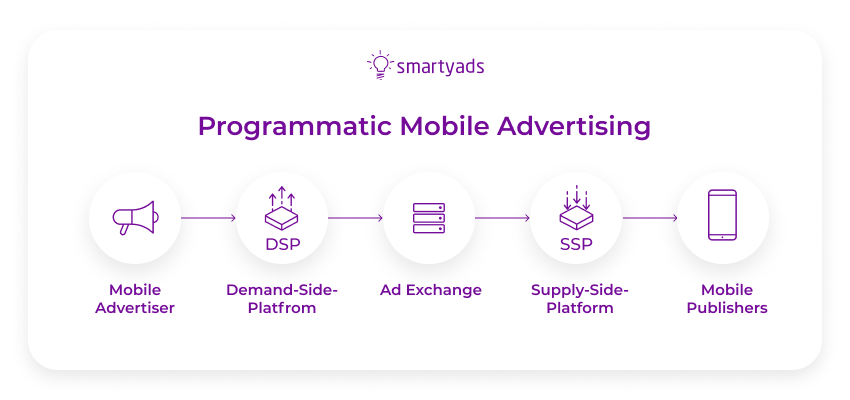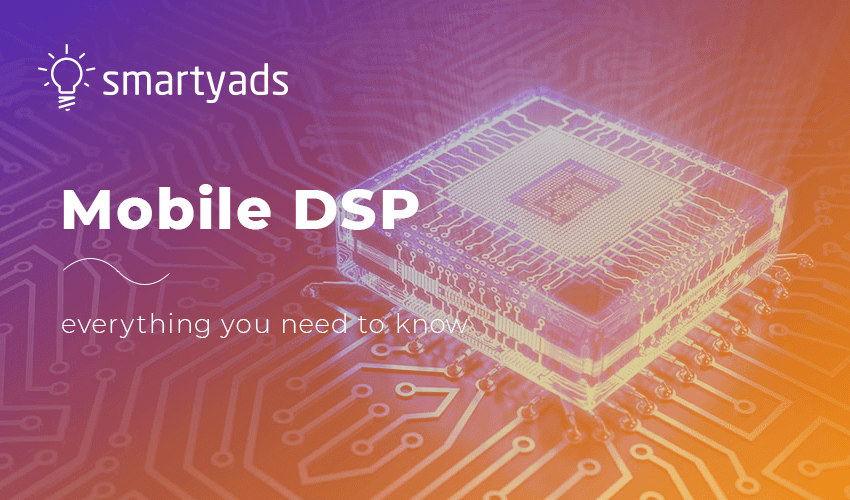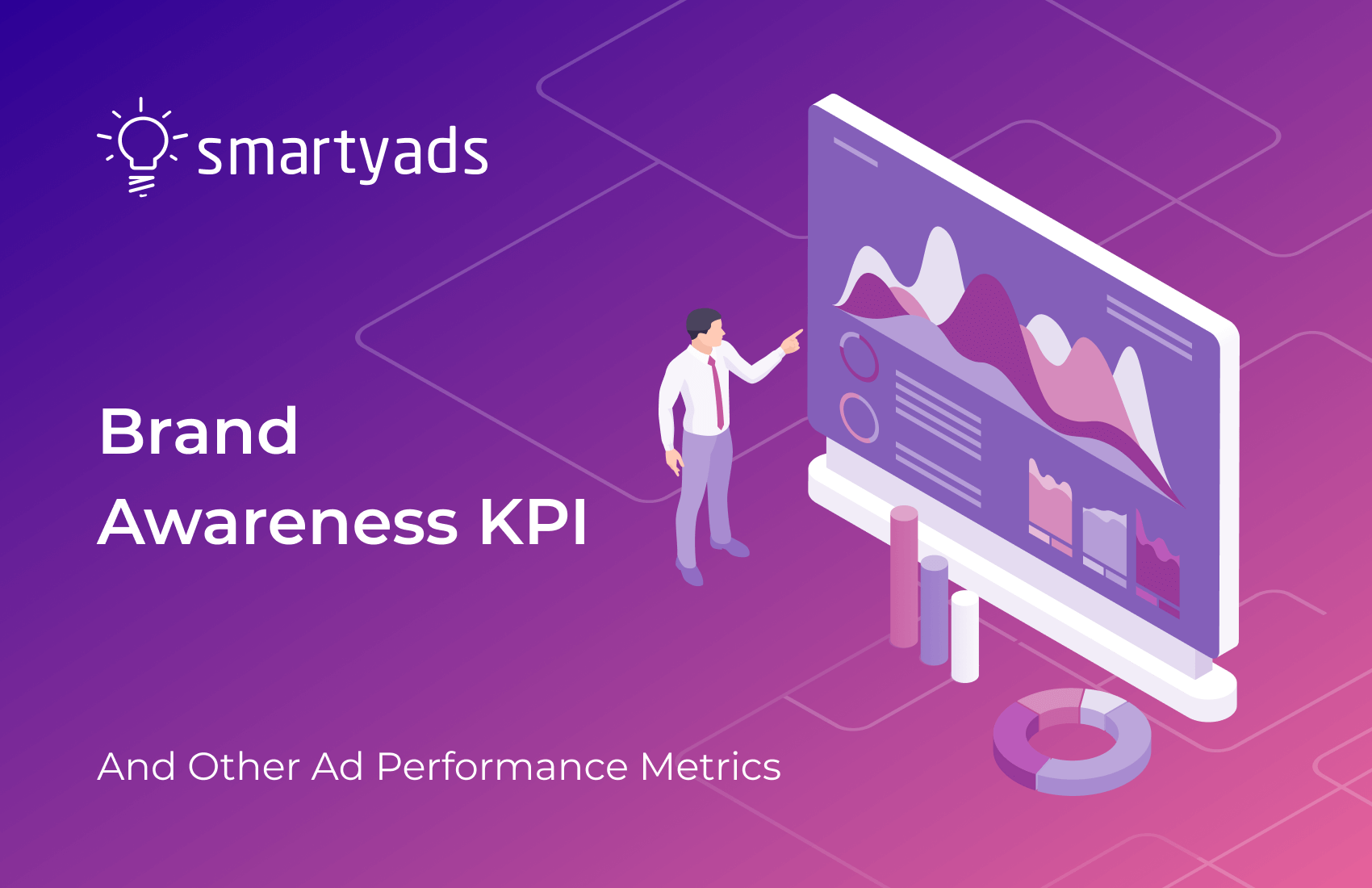The way people communicate is constantly changing. In 2016, mobile internet use surpassed desktop internet use for the first time. According to new stats generated in 2022, there are 5.31 billion unique mobile users. This report showed that the number of people using computers or laptops is falling, and the industry is rapidly moving toward highly personalized computing devices called smartphones.
These numbers prove that the smartphone is not just an ordinary device to receive messages and calls but a convenient way to access the web and receive information in real time. Modern consumers prefer to use smartphones because they are pocket-sized, all-in-one solutions that provide instant internet access and the ability to be in contact with friends and family.
Whatever the advantages are, one thing is clear: People love smartphones — which is good news for marketers because now you know where your consumers are.
Because users shift screens and devices, the mobile ecosystem is incredibly saturated and terribly fragmented. Many digital advertisers and media buyers want to reach their mobile target audiences but have no clue how to do it. The answer is through mobile demand-side platforms (DSPs).
Intro to Mobile Advertising
Today, marketers have multiple strategies to quick-start with mobile advertising. App-based campaigns, in-game mobile ads, QR codes, location-based marketing, and mobile search engine ads are just a few examples.
Programmatic technology lies at the very core of any mobile marketing strategy. Automation of the processes and streamlining of operations are crucial to the fast and multidimensional mobile ecosystem. Programmatic solutions effectively address these challenges, allowing marketers to target consumers based on various categories, reaching them across devices and platforms, and ensuring the delivery of highly personalized messages in real-time.
With the unlimited capabilities of programmatic advertising (read here about things you need to know about programmatic), marketers can hit mobile audiences with relevant, timely, and interactive ads in various ad formats. Mobile ad types include a banner, native ads, video, interstitial, rich media, text, and more, giving a lot of choices not only to advertisers but also to mobile app developers, app publishers, and in app marketers.
In recent times, the in app marketplace has been booming with various products this is partly because of the increased possibility of maximizing inventories for ad revenue Mobile campaigns can be launched for smartphones, tablets, and wearables such as smartwatches.
Algorithms use big data to analyze and segment audiences, a spot which devices they use, and track online behavior. Machines’ abilities surpass human skills in direct sales, making the process of buying and selling mobile ads fast and cost-effective.

What Is Mobile Demand side Platform DSP?
A mobile DSP is not a standalone entity but an independent part of any robust demand side platform. Just because the mobile ecosystem is different from the desktop environment doesn’t mean that it requires a separate platform for programmatic media buying. In an already fragmented digital advertising world, the split between mobile and desktop would cause even more confusion.
For this reason, the mobile DSP is deeply integrated within the already-existing solution for the demand side. Thus, when people say “mobile DSP,” they are actually referring to the part of the typical demand-side platform that is responsible for buying mobile inventory.
Mobile DSP is a software platform used by mobile media buyers to purchase mobile advertising space. It allows managing multiple supply-side platforms, ad exchanges, and ad network accounts through one mediated interface.
Mobile ad platforms are used for buying mobile impressions through real time bidding auctions (read on about why marketers should care about Real-time Bidding), but this is not always the case. Advertisers may choose to buy mobile inventory through private marketplaces, direct deals, programmatic direct, or automated guarantees.

How mobile DSPs work
Mobile demand-side platforms are plugged into a mobile ad exchange, where app publishers and app developers offer available mobile and tablet ad impressions. When the mobile impression appears in the system, DSPs analyze it and bid on it in case it carries value to the advertiser. If the bid is accepted, the ad creative will be served in the downloaded, opened, or initialized mobile apps or on the mobile web.
Mobile media buying involves purchasing remnant inventory in bulk through a blind ad network at lower prices or bidding on a per-impression basis and tracking where the ad will be served, ensuring full transparency and higher-quality traffic.
Some mobile DSPs now support multi-channel media buying in addition to linking to an ad exchange, or ad network, thanks to recent technological advancements. In recent years, demand side platforms have established connections with platforms such as:
- In-app direct publishing
Formerly, media buyers had to monitor many ad campaigns targeted for diverse sources such as Google and social media sites, all of which they had to oversee from separate dashboards. Now, demand side platforms make it possible to coordinate and control ad campaigns from several channels into a single interface. Advertisers can now operate and assess multi-channel campaigns from one point.

The framework of a mobile DSP
There are component functions with varying roles that align to achieve effectiveness in a mobile DSP. Some DSPs may have a different name or description for a particular component, nonetheless, their functions are usually the same.
Ad Servers
Ad servers play a crucial role in mobile programmatic advertising. Ad servers are used by DSPs to store and transmit ad creatives to publishers' platforms. Aside from that, ad servers keep track of campaign performance, impressions, and conversion rates.
Some DSPs own and operate their own ad servers, while others connect to ad servers operated by other ad tech firms.
Integrations and collaborations
As earlier stated, mobile DSPs are not standalone infrastructures for mobile programmatic advertising, they must connect with other systems to function. DSPs work with mobile ad exchanges and SSPs. They also collaborate with additional tools to expand their capability, such as data management platforms, analytics platforms, ad networks, etc.
Bidding
One of the most significant aspects of a mobile DSP is the bidding procedure which is happening in ad networks. This process is handled by a structure called the "bidder." The bidder manages the real time bidding process by submitting offers for inventories. Because the RTB process takes microseconds to complete, being able to complete the bid as quickly as feasible is critical.
Tracking and reporting operation
To track and report on ad campaigns, every mobile DSP should include a tracking and reporting system. A campaign tracker is a tool that keeps track of the effectiveness of a campaign. Impressions, user interaction, views, clicks, ad request, CTR, conversions, the performance of ad formats, and ad spending are just a few of the important metrics tracked.
Advertisers can use this information to fine-tune their ad settings and creatives. This data is then displayed on a dashboard and used to optimize online advertising campaigns.
Ad spend banker
In a typical DSP setting, this is frequently referred to as the banker or cashier. This function allows the user to plan their ad budget. Advertisers may unintentionally spend more than they anticipated due to the real-time bidding function. However, you can use this tool to create expenditure limits and other ad spending constraints.
User information storage
When users watch an ad provided by a DSP, the DSP collects information about them.
This is a crucial element of the DSP and it aids in the processing and storage of key user data. User data comprises information on purchasing behaviors, interests, age groups, and demographics, among other things. Mobile marketers can utilize this data to enhance the effectiveness of their efforts and get better outcomes.
Machine learning
The operations and requirements of mobile DSPs demand that they employ machine learning technology. With ML, DSPs can aggregate the best bidding and pricing strategy, user behavior, ad formats, and journey with the purpose of delivering the most intelligent solution and predicting the most appropriate future actions.
Type of Mobile DSP
Do you want to manage your campaign by yourself, or do you need assistance? Mobile advertisers may choose self serve mobile DSPs and customize targeting, campaign settings, budgeting, and bidding options independently. Or they may opt for managed DSPs and have an assigned account manager who advises on the campaign and helps optimize it in the long run.
Basically, there are two types of mobile DSP, they include:
- Self serve DSPs
- Full-service DSPs
What are self serve DSPs?
Self-serve implies that an advertiser running ad campaigns does not require any outside help or third-party entities to conduct, manage and execute the process. All of the processes of bidding, creation, and execution are strictly handled by the advertiser or his team.
The self-serve DSP is the more common approach online advertisers and programmatic advertising experts employ. It is based on a real time bidding auction which is typically done in an automated environment. Usually, every advertiser who is connected to the same DSP bid for an ad impression at the same moment with the highest bidder winning the auction.
With a self serve DSP partner, you are involved in the entire process which promotes transparency and flexibility. All you need do is to sign-up, deposit some funds for the automatic auction proceedings, set up your creative, tweak all the necessary parameters to your preference.
What are full-service DSPs?
Full-service DSPs are like performance marketers or ad agencies, they provide campaign managerial services for an advertiser. The DSP provides you with dedicated managers who will manage the entire campaign on your behalf. These managers are usually experts at programmatic advertising management and ad optimization. With this method, the DSPs handle the entire process including formulating ad strategies, budgeting, and targeting parameters.
However, A full-service DSP is generally more pricey because the DSP determines the minimum advertising budget for every campaign. Also, the advertiser has less control over the ad campaign processes. But on a positive note, it allows for convenience and enables you to focus on other aspects of your business while the ad experts handle your campaign delivery.
In the end, choosing which DSP type to go with comes down to preference. If you want to have full control of the whole process, adopt a self-service DSP. If you want experts to handle the ad process then choose the full-service option. Ask your DSP provider about the fees connected to the managed DSP services and ensure that you are aware of the DSP’s ability to manage your campaigns efficiently.
Features to Consider When Choosing the Right Mobile DSP
Advanced Technology
Mobile DSPs are required to handle processes across browsers, operating systems, mobile apps, mobile devices, and locations. Such streams of data coming from multiple sources demand powerful architecture.
Ask your mobile DSP vendor what tech stack they employ and whether its platform can accommodate massive amounts of data, and. Make sure that the mobile DSP can execute multiple online advertising campaigns both in the app and on the web simultaneously, plug into multiple ad exchanges and ad networks, and reflect information in real-time on your interface.
Targeting
Because reaching the right audiences is so crucial in mobile advertising, many mobile DSPs use integrated first- and third-party data that segments audiences and builds even better algorithms for more accurate targeting on mobile.
Targeting for mobile can include:
- Contextual
- Demographic
- Geo
- Technical (IP, OS, carrier, device type, etc.)
Advanced mobile DSPs enable GPS targeting (read here about the future of mobile ads) according to specific coordinates, precise Wi-Fi or IPs targeting, retargeting, dayparting, and targeting specific categories, such as travel or gaming applications. In mobile advertising, targeting is king, so be especially aware of the exact targeting capabilities a mobile demand side platform offers.
Diverse Inventory
It is important that the mobile DSP you chose supports various ad formats including in app formats that allow experimenting with user engagement, including:
- Rich media
- Video units
- Incentivized display ads
- Native ad placement
- Dynamic ads
- Interstitial
- Rich media
- Video units
- Incentivized display ads
- Native ad placement
- Dynamic ads
- Interstitial
Moreover, pay attention to the innovative ad formats that allow mobile users to interact with the ad and perform actions such as touching, swiping, expanding, and animating the creative. To serve such high-resolution ads, the mobile DSP must incorporate in-built modular units that support an upgraded SDK architecture.
Consider finding ad placement on mobile-optimized websites, mobile search, social media for mobile, branded applications, mobile apps, sponsored links, static mobile display (banner ads), SMS and messaging in-feed advertising, barcodes, and downloadable coupons.
Buying Models
Choose the media buying model that fits your advertising campaign objectives. The most common models for mobile advertising campaigns include:
- CPM (cost per mille)
- CPC (cost per click)
- CPI (cost per install)
- CPA (cost per action)
- CPV (cost per view)
- Read more about performance-based metrics.
Brand Safety
It is absolutely imperative that your mobile DSP vendor ensures high-quality traffic sources and provides multi-layered anti-fraud scanning software and fake click detection mechanisms. Ask about viewability metrics that allow tracking the number of impressions that were seen by real users.
Reporting
Tracking your campaign performance is important because data provides you with in-depth insights into how users engage with your ads. Ensure that the mobile DSP provides frequently updated reports that can be easily exported in granular forms. Knowing what works and what doesn’t, can help you further optimize an online advertising campaign, minimize budget waste and maximize return on investment.
What is a data management platform?
Data management platforms are systems that organize and store multiple user data emanating from various sources including mobile websites and offline sources.
A DMP collects and consolidates first party data and third party data and makes it accessible to other ad tech platforms such as demand-side platforms, major ad exchanges, and a supply side platform for campaign customization and other targeting purposes.
With DMPs mobile online advertisers would get valuable insights into their leads and customers. They also enable marketers to optimize their targeting capacity and outcomes for efficient user acquisition.
Most mobile ad platforms collaborate with a DMP to give advertisers incredibly precise audience segmentation options. Many self-serve DSP interfaces offer the option to employ a DMP in the advertising flow.
Benefits of mobile DSPs
From the foregoing, we have highlighted various benefits of mobile DSPs, however, let us look at some more specific advantages.
- Access to a wide audience
Advertisers have the opportunity to meet a wide target audience by connecting with mobile DSPs. Mobile DSPs engage with various supply side platforms, ad exchanges, and other mobile platforms from all around the globe. By signing up for a mobile DSP, you'll have unrestricted access to a premium audience and quality traffic sources.
- Efficient targeting
DSPs leverage user data to optimize their operation, allowing media buyers to target specific demographics and reach out to potential users.
- Transparency and security
Ad fraud is a major problem limiting the efficiency of digital advertising. Utilizing DSPs enables marketers to buy inventories from known and identified SSPs and publishers. This promotes efficiency and mitigates the occurrence of ad fraud.
Questions?
Now you have an idea of what the mobile DSP is and what features it must support to enable effective programmatic buying in the mobile ecosystem. Media buyers and brands cannot afford to neglect the growing opportunities presented by mobile advertising. It’s time to choose your mobile DSP.
Need a reliable mobile advertising solution? Register at SmartyAds DSP.





